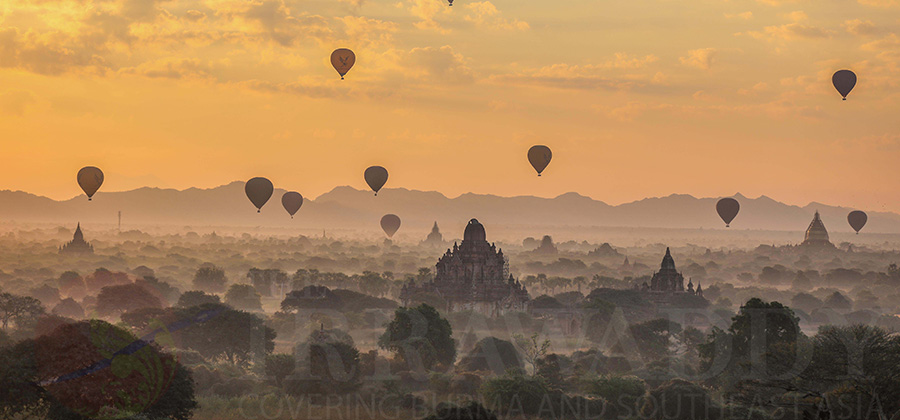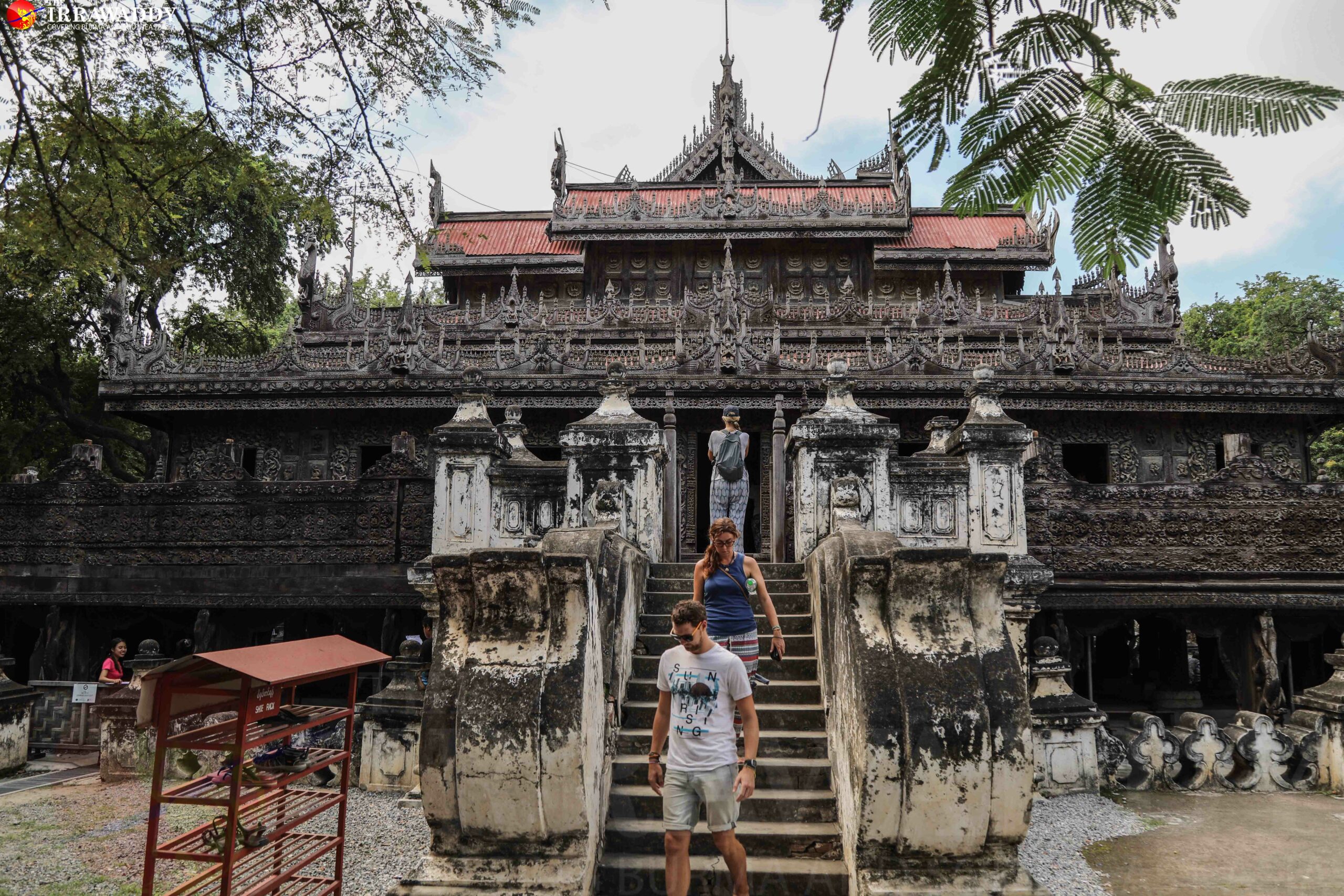YANGON – While Myanmar’s de facto leader Daw Aung San Suu Kyi is seeking to lure more tourists by modernizing the country’s transportation system and constructing budget hotels, the tourism industry is turning its eyes to the Asian market as many Western online travel agencies (OTAs) discourage travel to Myanmar.
In particular, OTAs in the U.S., Canada, England and Scandinavia have drastically downplayed Myanmar as a tourist destination following the Army’s crackdown on the Rohingya community in northern Rakhine, which drove out nearly 700,000 Rohingya to neighboring Bangladesh. Members of the security forces are accused of widespread killings, rapes and arson. A report by an independent UN fact-finding mission said the action had “genocidal intent” and urged that the military leadership be investigated for crimes against humanity at the International Criminal Court.
While the UN’s findings have, of course, been widely reported by international news outlets, Western OTAs have been quietly punishing Myanmar by removing it as a destination from their brochures and tour packages.
U.S.-based online travel giant Trip Advisor — a website that provides all kinds of advice on accommodation, airlines, restaurants and hotels to travelers — has left Myanmar out of its 2018 Travelers’ Choice Awards for the best 25 destinations in Asia for the past several years, while holiday spots in neighboring countries Indonesia, Thailand and Vietnam consistently make the list. Thailand alone has five destinations on the most recent list. The page attracts about 456 million visitors a month.
Myanmar was, however, included among the top 20 destinations in Asia as ranked by another popular travel website, Lonely Planet.
A senior review writer for Trip Advisor who uses the name “Prof. Victor”, and who regularly writes about Asia’s best destinations, disclosed to the The Irrawaddy that Myanmar had been omitted from the site’s “Asia’s Top 25 Travel Destinations as well as its “Destination on the Rise” list. He added, however, that he didn’t know who was responsible for compiling the global and regional destinations lists, or whether the decision to omit Myanmar was based on the political climate in the country. Other sections on the website still list tourist sites in Bagan, Nyaung Shwe, Inle and Yangon. Notably, Rakhine’s Ngapali Beach was ranked in the top three among the site’s 25 best beaches in Asia.
German hotelier Oliver Esser, who operates a hotel in Ngapali Beach, pointed out that “Trip Advisor or any other publication is a trend setter, so at top is [the] best, [but] in the middle or [at No.] 25 still gets a share. So when you are not there at all it means you are not alive; your name is not alive anymore.”

Cheryl Long, Trip Advisor’s senior communications manager for Asia Pacific, said in a brief email reply to questions from The Irrawaddy on Thursday that her company’s rankings are based on an algorithm that considers the quality and quantity of reviews and ratings for hotels, attractions and restaurants worldwide, gathered over a 12-month period. These include traveler bookings made via its own website.
Myanmar erased from brochures
Daw Sabe Aung, managing director of Nature Dream Tour, said that OTAs from Canada, England, the US and Scandinavia distribute brochures every September that contain a list of popular destinations and itineraries for each country. References to Myanmar are being removed from these brochures due to the negative image of the country created by last year’s military clearance operations in northern Rakhine.
Daw Sabe Aung participated in the World Travel Market (WTM) event in Europe, and said she was frequently asked about the Rohingya issue there. She has also learned that some OTAs are even refusing to sell tickets and trips to Myanmar, following pressure from rights groups.
“Some giant travel agencies distribute brochures to their customers in advance of the tour season and Myanmar was left out of these booklets and leaflets. So just think about it: How can Myanmar can draw tourists?” Daw Sabe Aung said.
Although Prof. Victor could not decisively say whether US travel companies were joining the boycott campaign against Myanmar, he assumed that most Westerners received only one view, that of the Rohingya victimhood narrative, from international broadcasting and news outlets, as well as from right groups in the US, and that as a result the view of Myanmar is overwhelmingly negative.
“I scan the international press regularly, looking only for Myanmar-related issues, and mostly see hostile news about Myanmar. Let’s save Myanmar tourism from this,” Prof. Victor said.
Local travel agency operator Kyaw Swar Min said he had received the same message as Daw Sabe Aung. He explained that until now the local travel and tourism sector has relied more on Western countries than those from Asia. Now, local tour agencies are eyeing a switch to a culture-based tourism theme. This highlights the challenges that await tour agencies, as Asian and Western tourists travel for different reasons. Westerners, he said, love trekking, hiking and unique beaches, while Asian people enjoy shopping.
Kyaw Swar Min said, “It’s really tough for those of us who mainly target Westerners. The situation is like a restaurant owner who suddenly needs to open a teashop.”

From January to June 2018, the country received about 1.8 million visitors, a drop of roughly 38,000 compared with last year. The government targets 7 million annual tourist arrivals by 2020. Some analysts have blamed the drop on the 2017 violence in Rakhine State. By comparison, neighboring Thailand received 35.38 million tourists in 2017, equivalent to more than half its population. Even the Myanmar Tourism Ministry acknowledged in a state-owned newspaper that the tourist booking rate from Canada had declined 55 percent from last year.
According to the Ministry of Hotels and Tourism, there are 1,676 hotels and 67,350 rooms across the country for tourists, but the industry’s income has fallen since the humanitarian crisis erupted in northern Rakhine State in August last year. Overall visitor numbers from the U.S., Canada, the Middle East and Europe have declined significantly in 2018 because the country’s image has been tarnished in the eyes of many Western and European travelers.
Targeting the Asian market
Travel agents believe that tourist arrivals to Myanmar will increase when the country’s political climate stabilizes, adding that this will take at least two to three years. The same pattern was observed right after 2012 communal rioting between the Rakhine and Rohingya communities. Oliver Esser, the Ngapali Beach hotel owner, recalled that tour agencies immediately canceled trips for the whole season, but that a few years later the area had its hottest tourist season in decades.
The Irrawaddy asked five businesspeople whether Myanmar would be able to salvage its tourist season in 2018. Three thought it “very unlikely” and two said the situation was “tough to predict”.
According to Oliver Esser, “Germany’s biggest study tour operator totally trimmed down from 100 tours a year to Myanmar.” He added that a famous travel guidebook and online forum said that “Myanmar cannot be sold”.
“I think it will [get] much more worse,” he said.
Myanmar Tourism Federation vice chairwoman Daw May Myat Mon Win said she had heard the same sentiment, though she did not have precise statistics. Travel agencies and hoteliers are already preparing to promote new destinations that target Asian tourists. Official figures show that Asian tourists already account for 70 percent of the total, with those from the U.S., Europe and Scandinavia providing the remainder. However, Western visitors tend to stay longer — about one to two weeks — and spend more money than their Asian counterparts.
“As far as I know, some tour operators are already stepping out [to develop] Asia-focused tour packages,” she said.
The Myanmar government recently introduced visa-free entry for Japanese and Koreans, and visas on arrival for Chinese people as part of its marketing strategy. Daw May Myat Mon Win said Myanmar tourism is generally based on cultural destinations, such as promoting archeological zones, pagodas and temples to older tourists. Until 2014-16, the entire industry forgot to create new experiences for middle aged and younger people, she said.
“Some customers told me that they have no idea where to go in Yangon at nighttime. We don’t have anything like a night bazaar, and one should be created,” Daw May Myat Mon Win said.
At a meeting with tourism associations in Naypyitaw in mid-August, State Counselor Daw Aung San Suu Kyi urged tour operators to develop new destinations and nature/adventure trips.
Daw Aung San Suu Kyi said, “If we can modernize our transportation system, we will be able to attract more tourists.”
Daw May Myat Mon Win said that in order to maintain tourist interest in Myanmar, the MTF and the Tourism Ministry discussed at a recent meeting a plan to advertise new tourist spots and untouched destinations on international broadcasters like CNN and other wire agencies. The government has given the green light to funding for a pilot project and plans to kick it off in October.

















